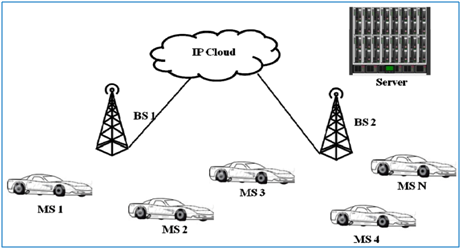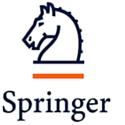VANET SIMULATION NS3 PROJECT , the nodes are communicated using the IEEE 802.11p standard for wireless communication. Vehicles connected to each others through an ad hoc formation form a wireless network called as Vehicular Ad Hoc Network. VANETs are a subgroup of the MANET
Characteristics of VANET:
- Unbounded network size
- Crucial effect of security and privacy
- Have high mobility of nodes
- Real-time, time-sensitive data exchange
- Rapidly changing network topology
- Potential support from infrastructure etc.
Architecture of VANET:

Challenges Faced in VANET SIMULATION PROJECT:
- Network scalability
- Mobility
- Privacy Vs liability
- Volatility
Privacy Vs authentication
Sample code for Vanet Simulation NS3 projects :
This is the sample code for vanet routing compare.
class VanetRoutingExperiment : public WifiApp
{
public:
VanetRoutingExperiment ();
protected:
virtual void SetDefaultAttributeValues ();
virtual void ParseCommandLineArguments (int argc, char **argv);
virtual void ConfigureNodes ();
virtual void ConfigureChannels ();
virtual void ConfigureDevices ();
virtual void ConfigureMobility ();
virtual void ConfigureApplications ();
virtual void ConfigureTracing ();
virtual void RunSimulation ();
virtual void ProcessOutputs ();
private:
void Run ();
void CommandSetup (int argc, char **argv);
void CheckThroughput ();
void SetupLogFile ();
void SetupLogging ();
void ConfigureDefaults ();
void SetupAdhocMobilityNodes ();
void SetupAdhocDevices ();
void SetupWaveMessages ();
void SetupRoutingMessages ();
void SetupScenario ();
void WriteCsvHeader ();
void SetConfigFromGlobals ();
void SetGlobalsFromConfig ();
static void
CourseChange (std::ostream *os, std::string foo, Ptr mobility);
uint32_t m_port;
std::string m_CSVfileName;
std::string m_CSVfileName2;
uint32_t m_nSinks;
std::string m_protocolName;
double m_txp;
bool m_traceMobility;
uint32_t m_protocol;
uint32_t m_lossModel;
uint32_t m_fading;
std::string m_lossModelName;
std::string m_phyMode;
uint32_t m_80211mode;
std::string m_traceFile;
std::string m_logFile;
uint32_t m_mobility;
uint32_t m_nNodes;
double m_TotalSimTime;
std::string m_rate;
std::string m_phyModeB;
std::string m_trName;
int m_nodeSpeed; //in m/s
int m_nodePause; //in s
uint32_t m_wavePacketSize; // bytes
double m_waveInterval; // seconds
int m_verbose;
std::ofstream m_os;
NetDeviceContainer m_adhocTxDevices;
Ipv4InterfaceContainer m_adhocTxInterfaces;
uint32_t m_scenario;
double m_gpsAccuracyNs;
double m_txMaxDelayMs;
int m_routingTables;
int m_asciiTrace;
int m_pcap;
std::string m_loadConfigFilename;
std::string m_saveConfigFilename;
WaveBsmHelper m_waveBsmHelper;
Ptr m_routingHelper;
Ptr m_wifiPhyStats;
int m_log;
int64_t m_streamIndex;
NodeContainer m_adhocTxNodes;
double m_txSafetyRange1;
double m_txSafetyRange2;
double m_txSafetyRange3;
double m_txSafetyRange4;
double m_txSafetyRange5;
double m_txSafetyRange6;
double m_txSafetyRange7;
double m_txSafetyRange8;
double m_txSafetyRange9;
double m_txSafetyRange10;
std::vector m_txSafetyRanges;
std::string m_exp;
int m_cumulativeBsmCaptureStart;
};
VanetRoutingExperiment::VanetRoutingExperiment (): m_port (9),
m_CSVfileName (“vanet-routing.output.csv”),
m_CSVfileName2 (“vanet-routing.output2.csv”),
m_nSinks (10),
m_protocolName (“protocol”),
m_txp (20),
m_traceMobility (false),
m_protocol (2),
m_lossModel (3),
m_fading (0),
m_lossModelName (“”),
m_phyMode (“OfdmRate6MbpsBW10MHz”),
m_80211mode (1),
m_traceFile (“”),
m_logFile (“low_ct-unterstrass-1day.filt.5.adj.log”),
m_mobility (1),
m_nNodes (156),
m_TotalSimTime (300.01),
m_rate (“2048bps”),
m_phyModeB (“DsssRate11Mbps”),
m_trName (“vanet-routing-compare”),
m_nodeSpeed (20),
m_nodePause (0),
m_wavePacketSize (200),
m_waveInterval (0.1),
m_verbose (0),
m_scenario (1),
m_gpsAccuracyNs (40),
m_txMaxDelayMs (10),
m_routingTables (0),
m_asciiTrace (0),
m_pcap (0),
m_loadConfigFilename (“load-config.txt”),
m_saveConfigFilename (“”),
m_log (0),
m_streamIndex (0),
m_adhocTxNodes (),
m_txSafetyRange1 (50.0),
m_txSafetyRange2 (100.0),
m_txSafetyRange3 (150.0),
m_txSafetyRange4 (200.0),
m_txSafetyRange5 (250.0),
m_txSafetyRange6 (300.0),
m_txSafetyRange7 (350.0),
m_txSafetyRange8 (400.0),
m_txSafetyRange9 (450.0),
m_txSafetyRange10 (500.0),
m_txSafetyRanges (),
m_exp (“”),
m_cumulativeBsmCaptureStart (0)
{
m_wifiPhyStats = CreateObject ();
m_routingHelper = CreateObject ();
m_log = 1;
}
Current Work progress
NS3 Projects for MS Students
NS3 Projects for B.E,B.Tech students
NS3 Projects for M.E,M.Tech Students
NS3 Projects for PhD Scholars
We assist PhD Scholars in Publishing Papers in Reputed journals for NS3 Simulator Projects.











